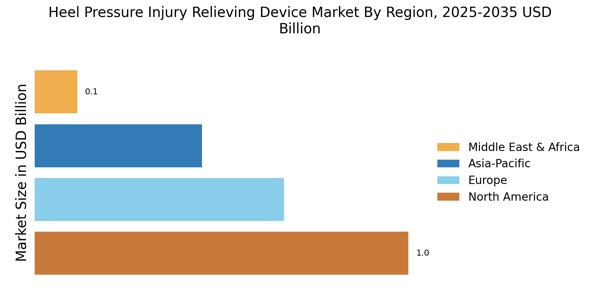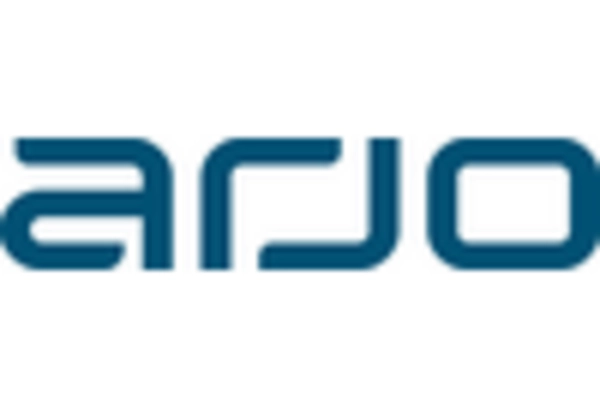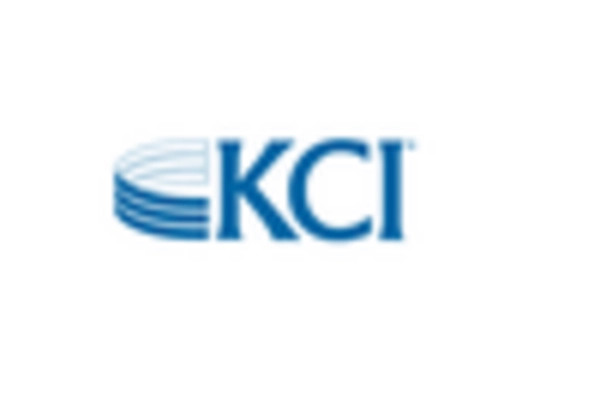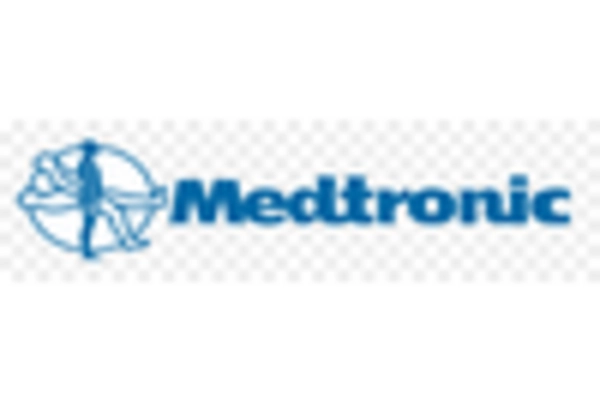Growing Geriatric Population
The demographic shift towards an aging population is a significant driver for the Heel Pressure Injury Relieving Device Market. As the global population ages, the number of individuals at risk for pressure injuries increases, particularly among those with chronic health conditions. Data indicates that the geriatric population is expected to double by 2050, leading to a corresponding rise in the demand for healthcare services and products designed to prevent pressure injuries. This demographic trend underscores the necessity for effective heel pressure injury relieving devices, as healthcare providers seek to address the unique needs of older patients. Consequently, the market is poised for growth as manufacturers develop targeted solutions for this expanding demographic.
Regulatory Support and Guidelines
The Heel Pressure Injury Relieving Device Market benefits from increasing regulatory support and guidelines aimed at improving patient care standards. Various health authorities are establishing protocols that emphasize the importance of pressure injury prevention, which includes the use of specialized devices. For instance, the implementation of guidelines by organizations such as the National Pressure Injury Advisory Panel has led to heightened awareness among healthcare providers regarding the necessity of using effective pressure-relieving devices. This regulatory framework not only encourages the adoption of heel pressure injury relieving devices but also fosters innovation within the industry. As compliance with these guidelines becomes essential, the market is likely to see a boost in demand for compliant products.
Rising Incidence of Pressure Injuries
The prevalence of pressure injuries, particularly among vulnerable populations such as the elderly and those with limited mobility, is a critical driver for the Heel Pressure Injury Relieving Device Market. Reports suggest that pressure injuries affect a substantial percentage of hospitalized patients, leading to increased healthcare costs and extended hospital stays. The World Health Organization has indicated that pressure injuries can lead to severe complications, thereby necessitating effective prevention strategies. As healthcare systems prioritize patient safety and quality of care, the demand for effective heel pressure injury relieving devices is expected to increase. This growing awareness of the need for preventive measures is likely to propel the market forward.
Increased Focus on Preventive Healthcare
The shift towards preventive healthcare is reshaping the landscape of the Heel Pressure Injury Relieving Device Market. Healthcare providers are increasingly recognizing the importance of prevention in reducing the incidence of pressure injuries, which can lead to serious complications and increased healthcare costs. This focus on prevention is supported by research indicating that investing in preventive measures can yield significant cost savings for healthcare systems. As a result, there is a growing demand for heel pressure injury relieving devices that can effectively mitigate the risk of pressure injuries. This trend is likely to drive innovation and expansion within the market, as manufacturers respond to the evolving needs of healthcare providers and patients.
Technological Innovations in Heel Pressure Injury Relieving Devices
The Heel Pressure Injury Relieving Device Market is experiencing a surge in technological innovations that enhance the effectiveness of these devices. Advanced materials, such as memory foam and gel-infused fabrics, are being integrated into product designs to provide superior pressure relief and comfort. Furthermore, the incorporation of smart technology, including sensors that monitor pressure distribution, is becoming increasingly prevalent. This trend is supported by data indicating that the market for smart medical devices is projected to grow significantly, potentially reaching billions in revenue by the end of the decade. As healthcare providers seek to improve patient outcomes, the demand for technologically advanced heel pressure injury relieving devices is likely to rise, driving growth in the market.


















Leave a Comment